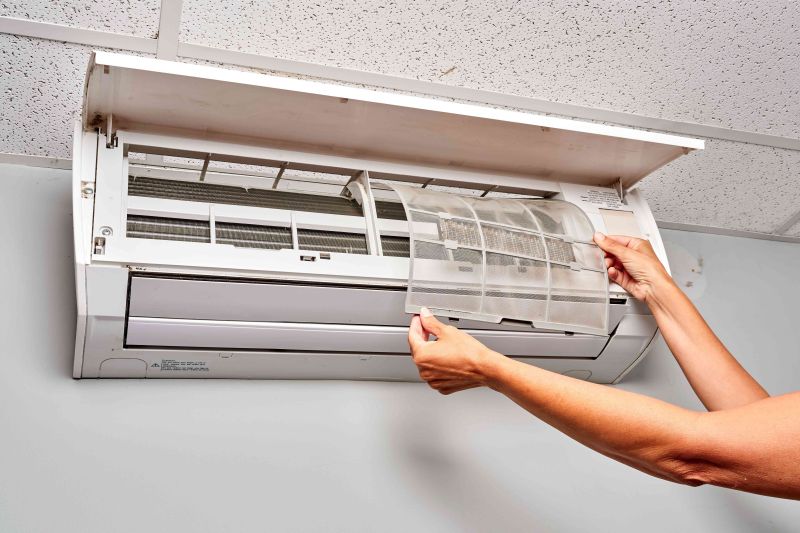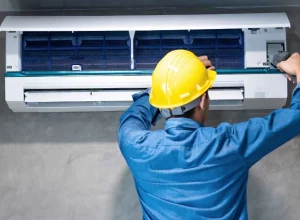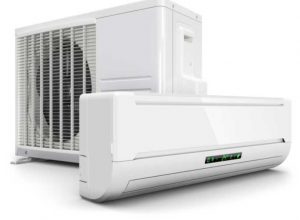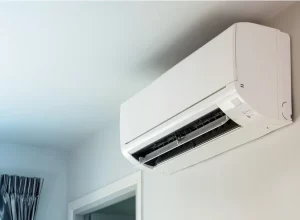Contents
Understanding Air Conditioning Systems
Air conditioning is a critical component of modern living, providing comfort by cooling and dehumidifying indoor air. The fundamental operation of an air conditioning system revolves around the principles of thermodynamics and fluid dynamics, utilizing refrigerants to absorb and release heat. To fully appreciate how air conditioning systems work, it is essential to understand the basic principles and components involved.
The key components of an air conditioning system include the compressor, condenser, evaporator, and expansion valve. The compressor serves as the heart of the system, compressing the refrigerant gas and elevating its temperature and pressure. This high-pressure gas then flows into the condenser, where it releases heat to the outside environment and transitions into a high-pressure liquid.
Next, the refrigerant passes through the expansion valve, a critical component that reduces its pressure and temperature. This low-pressure refrigerant then enters the evaporator coil, located inside the building. As warm indoor air is blown over the evaporator coil, the refrigerant inside absorbs the heat and evaporates, cooling the air that is subsequently returned to the living space.
Additionally, air conditioning systems are designed to regulate indoor humidity levels. The process of cooling the air often involves dehumidification, as the evaporator coil lowers the temperature of the air to a point where moisture condenses and is removed, further improving comfort levels. This is particularly important in regions with high humidity where without adequate ventilation and dehumidification, indoor air quality can suffer.
Furthermore, air conditioners can utilize different types of systems to achieve optimal performance, including central air conditioning systems, ductless mini-split systems, and window units. Central air conditioning systems are effective in cooling large areas and involve a network of ductwork to distribute conditioned air. In contrast, ductless systems provide a more flexible solution for cooling individual rooms without the need for extensive ductwork.
In summary, air conditioning systems involve intricate interactions among their components, guided by principles of heat exchange and thermodynamics. Understanding these mechanisms not only enhances appreciation for the technology but also informs maintenance practices to ensure efficient and prolonged operation.
The Basic Principles of Air Conditioning
Air conditioning systems operate on the principles of thermodynamics, specifically the refrigeration cycle, which involves four primary stages: evaporation, compression, condensation, and expansion. Understanding this cycle helps clarify how heat is removed from your indoor environment and transferred outdoors.
1. Evaporation
In this initial stage, the air conditioning system absorbs heat from the indoor environment. This process occurs in the evaporator coil, usually located inside the system. The refrigerant, a chemical with a low boiling point, enters the evaporator as a low-pressure liquid. As warm indoor air blows over the evaporator coils, the refrigerant absorbs heat, thereby vaporizing into a gas.
2. Compression
The gaseous refrigerant then flows to the compressor, located outside the building. The compressor’s primary function is to raise the pressure of the refrigerant gas, which increases its temperature. By compressing the gas, the compressor prepares it for the next stage. This is akin to how a bicycle pump compresses air, increasing its pressure and temperature.
3. Condensation
The high-pressure gas then moves to the condenser coil, which is also situated outside the building. Here, the refrigerant releases the heat it absorbed from the indoor environment to the outside air. As the gas cools, it condenses back into a liquid form. This process is enhanced by a fan blowing outdoor air over the condenser coils, thus assisting in heat exchange.
4. Expansion
Once the refrigerant has condensed back into a liquid, it passes through an expansion valve. This valve reduces the pressure of the refrigerant, cooling it down before it re-enters the evaporator coils. The entire cycle can now repeat as the cool refrigerant absorbs heat from the indoor air again.
Components of an Air Conditioning System
Understanding the individual components of an air conditioning system is crucial for recognizing how they work together to maintain indoor comfort.
| Component | Function |
|---|---|
| Evaporator Coil | Absorbs heat from indoor air, initiating the cooling process. |
| Compressor | Compresses refrigerant gas and raises its temperature and pressure. |
| Condenser Coil | Releases absorbed heat to the outdoor air, converting refrigerant to a liquid. |
| Expansion Valve | Reduces pressure of the refrigerant, allowing it to cool before re-entering the evaporator. |
| Refrigerant | A chemical that circulates through the system, absorbing and releasing heat as it changes states. |
| Thermostat | Monitors indoor temperature and regulates the system to maintain the desired comfort level. |
Types of Air Conditioning Systems
There are various types of air conditioning systems, each with unique attributes suited for different settings. Common types include:
- Central Air Conditioning: Distributes cool air through ducts and is best suited for large buildings.
- Split-System Air Conditioning: Consists of an indoor unit and outdoor compressor, ideal for single or multi-room cooling.
- Window Units: A compact option that fits directly in a window, suitable for small spaces.
- Portable Air Conditioners: Mobile units that can be moved between rooms, requiring a window for exhaust.
Conclusion
Air conditioning is an essential part of maintaining comfort in various environments. By understanding the fundamental processes involved in the refrigeration cycle, as well as the components of an air conditioning system, one can appreciate the efficiency and technology that contribute to this vital comfort feature. Regular maintenance of air conditioning units is crucial to ensure optimal performance and longevity, further enhancing the indoor experience.






